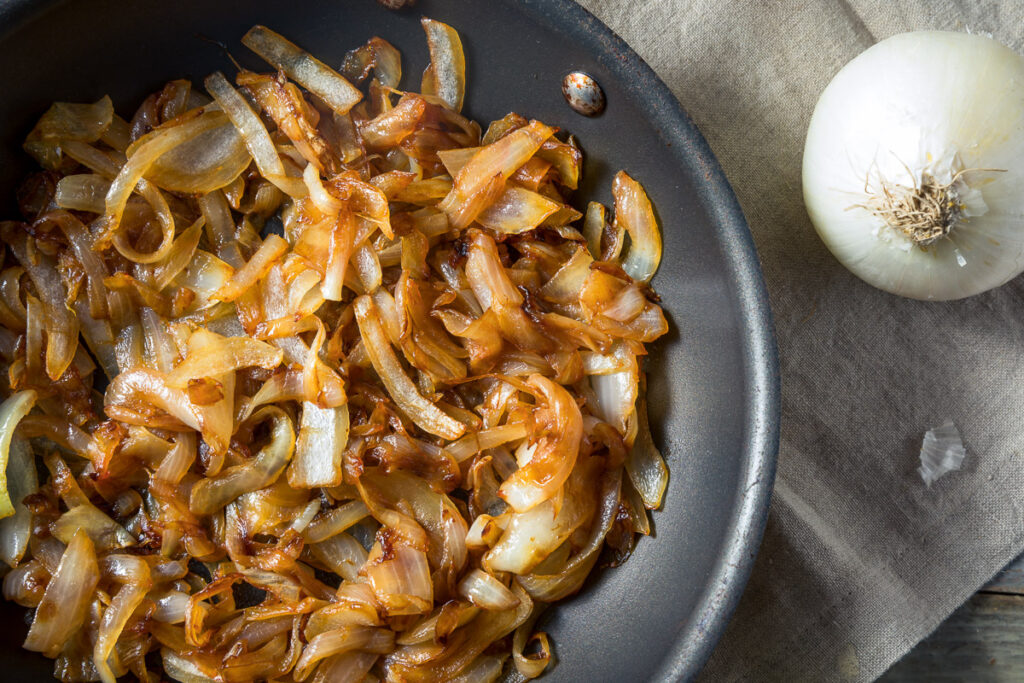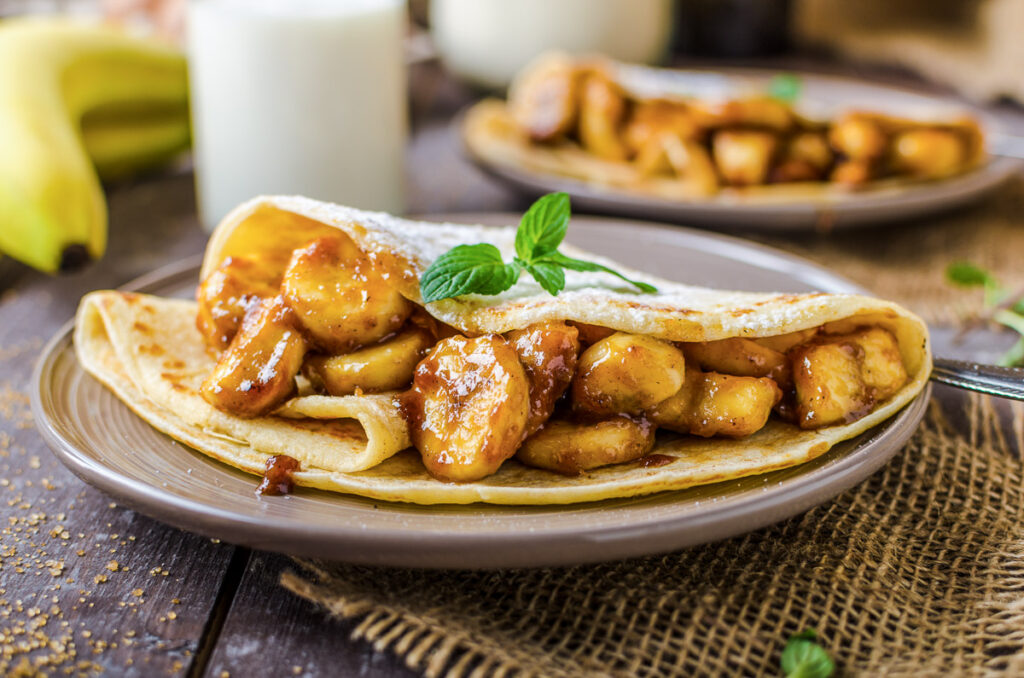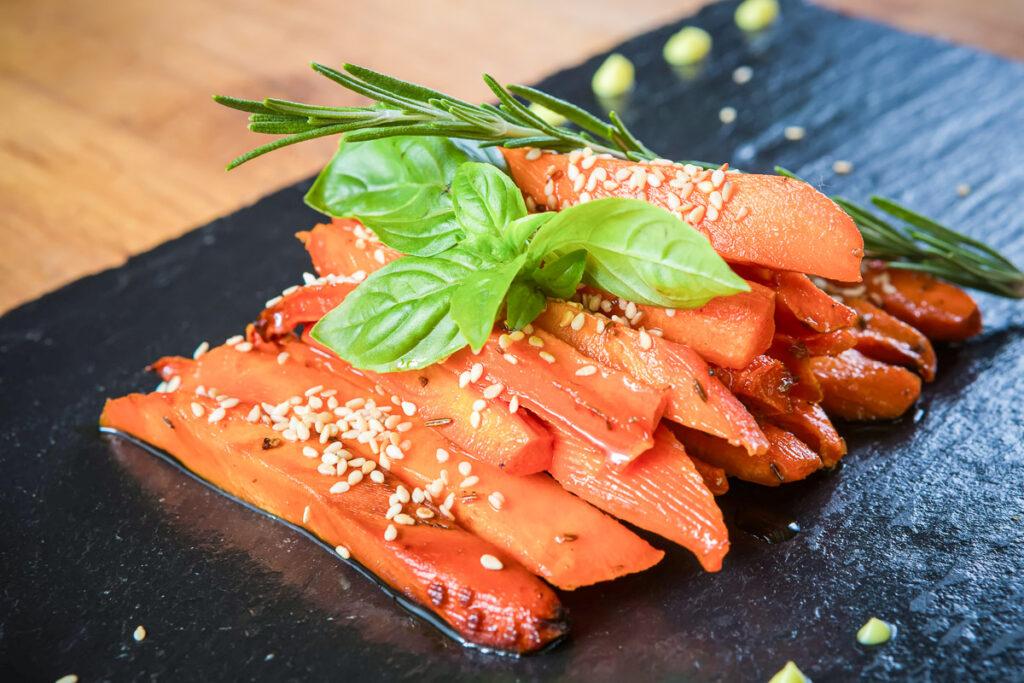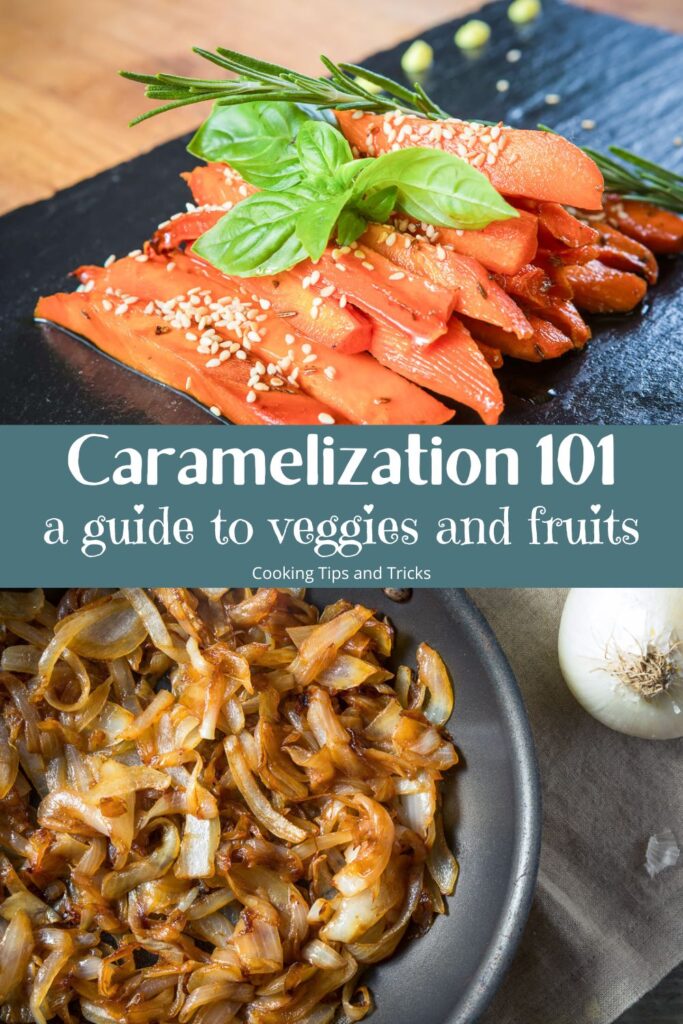Caramelization 101: How to Perfectly Caramelize Bananas, Onions, Carrots, and Apples
Caramelization is not just a cooking technique but a transformative process that can elevate everyday fruits and vegetables like bananas, onions, carrots, and apples into delectable treats. Let’s dive into how to caramelize these ingredients effectively, revealing the subtle nuances in their flavors.

Onions: Slow and steady wins the flavor race
Caramelizing onions is a process that requires patience, as it typically takes about 30 to 45 minutes, and sometimes even up to an hour. The time can vary based on several factors including the type of onion, the size of the slices, and the heat level. Here’s a general guide:
- Slice the onions: Thin, evenly sliced onions will caramelize more uniformly.
- Choose the right pan: Use a wide, thick-bottomed sauté pan to provide enough space for the onions and to distribute the heat evenly.
- Start with medium heat: Begin by cooking the onions over medium heat in butter, oil, or a combination of both.
- Reduce heat as needed: Once the onions start to soften and turn golden, reduce the heat to medium-low or low. Slow cooking allows the onions’ natural sugars to caramelize without burning.
- Stir occasionally: Stir the onions occasionally to ensure even caramelization and to prevent them from sticking to the pan or burning.
- Adjust the cooking time: 30 minutes might be enough for lightly caramelized onions. For deeply caramelized onions with a rich, dark color, you may need to cook them for 45 minutes to an hour.
Caramelized onions can elevate burgers, pizzas, and sandwiches or add a savory flavor to soups and salads.
Here is a recipe on how to caramelize onions.
The difference between caramelized onions and fried onions
Caramelized onions and fried onions are both delicious ways to prepare onions, but they differ significantly in cooking method, flavor, and texture.
- Cooking method:
- Caramelized onions: These are cooked slowly over low to medium heat. The process usually takes about 30 to 45 minutes or even longer. The key is to cook the onions gently and slowly until their natural sugars break down and caramelize, turning the onions a deep golden brown.
- Fried onions: These are cooked quickly over higher heat. The goal is to brown or crisp the onions, not to break down their sugars slowly. Fried onions can be either shallow fried in a pan or deep-fried.
- Texture:
- Caramelized onions: They become very soft and tender with a melt-in-the-mouth texture. The onions lose their original crispness and become sweet and jammy.
- Fried onions: These retain more of their original texture, being more crispy or crunchy, especially if deep-fried.
- Flavor:
- Caramelized onions: The flavor is sweet, rich, and deeply savory. The slow cooking process brings out the onions’ natural sweetness and develops complex flavor notes.
- Fried onions: They have a more straightforward onion flavor, often with a bit of a bite and a savory, crispy texture. If deep-fried, they can also have a hint of the oil’s flavor.
- Usage:
- Caramelized onions: Commonly used as a topping for burgers, pizzas, in soups, dips, or as a side dish. Their sweet and rich flavor complements a variety of dishes.
- Fried onions: Often used as a crunchy topping for burgers, casseroles, salads, or traditional dishes like green bean casserole. They are also popular in some Asian cuisines as a garnish.
In summary, caramelized onions are known for their sweet, rich flavor and soft texture, achieved through slow cooking, while fried onions are characterized by their crispy texture and more intense onion flavor, achieved through quicker, higher-heat cooking methods.
Bananas: A sugary symphony

Bananas are a delightful candidate for caramelization, and it’s a relatively quick process of 5 to 10 minutes for this special fruit. The exact time can depend on the ripeness of the bananas and the desired level of caramelization. Here’s a basic guide to the process:
- Preparation: Slice the bananas to your preferred thickness. Thicker slices will take longer to caramelize but can hold their shape better.
- Heat the pan: Melt butter or heat a small amount of oil in a skillet over medium heat.
- Add the bananas: Place the banana slices in the pan in a single layer.
- Cooking time: Allow the bananas to cook for 2-3 minutes on one side. As the natural sugars caramelize, they should start developing a golden-brown color.
- Flip and continue: Gently flip the bananas and cook on the other side for 2-3 minutes.
- Monitor closely: Watch the bananas, which can quickly go from perfectly caramelized to burnt. Due to bananas’ high sugar content and softer texture, the process is faster than caramelizing firmer fruits or vegetables.
Caramelized bananas are great as a topping for pancakes, waffles, or ice cream or a sweet treat. Remember, using ripe bananas will yield a sweeter result, as they contain more natural sugars.
Carrots: unearthing the sweetness

Carrots, with their natural sweetness, caramelize well.
Here is a recipe for buttery carrots.
Caramelizing carrots typically takes about 20 to 25 minutes, depending on the size and thickness of the carrot slices and the heat level. The process involves cooking the carrots slowly in a bit of fat (like butter or oil) over medium or medium-low heat. This slow cooking allows the natural sugars in the carrots to gradually caramelize, giving them a deep, sweet flavor and a rich, golden-brown color.
Here are a few steps to ensure the successful caramelization of carrots:
- Slice the carrots: Thin, even slices will caramelize more evenly. About ¼-inch thickness is ideal.
- Use a wide pan: Spread the carrots in a single layer in the pan to ensure they cook evenly.
- Moderate the heat: Start with medium heat and adjust as needed. If the carrots are browning too quickly, reduce the heat.
- Stir occasionally: Gently stir the carrots to ensure even caramelization and prevent burning.
- Add a bit of sugar (optional): To enhance the caramelization, sprinkle a small amount of sugar over the carrots partway through the cooking process.
- Be patient: Good caramelization takes time. Rushing the process can lead to uneven cooking or burning.
Caramelized carrots are a great side dish, adding a sweet note to savory meals.
Apples: From orchard to gourmet

Apples, when caramelized, can transform a dish.
Caramelizing apples typically takes about 15 to 20 minutes, depending on the type of apple, the size of the slices, and the desired level of caramelization. Here are some general guidelines for the process:
- Prepare the apples: Peel, core, and slice the apples. Thicker slices will take longer to caramelize but will maintain more of their structure.
- Heat the pan: Melt butter in a skillet over medium heat. You can add a sprinkle of sugar to aid in caramelization and add sweetness.
- Add the apples: Place the apple slices in the pan in a single layer.
- Cooking time: Allow the apples to cook for 7-10 minutes on one side. They should start to soften and turn golden-brown as the sugars begin to caramelize.
- Flip and continue cooking: Gently flip the apples and cook for another 7-10 minutes on the other side.
- Monitor closely: Watch the apples, as cooking times can vary. When properly caramelized, they should be tender and have a rich, golden color.
Remember, the variety of apples can impact the cooking time. Softer varieties like McIntosh cook faster, while firmer varieties like Granny Smith take longer. Adjust the cooking time accordingly and watch for the desired tenderness and color.
The difference between caramelized apples and fried apples
Here is a great recipe on how to make fried apples.
Caramelized apples and fried apples are similar in that they both involve cooking apple slices in a pan, but there are distinct differences in their preparation, flavor, and texture:
- Method of cooking:
- Caramelized apples: The focus is on slowly cooking the apples in butter (and often sugar) over medium to low heat to allow the natural sugars in the apples to break down and caramelize. This process typically takes longer and results in a deeper, richer flavor with a golden or brown color.
- Fried apples: These are usually cooked more quickly over medium to high heat. The apples are fried, often with a bit of sugar and spices, but not necessarily cooked long enough for the natural sugars to caramelize extensively. The emphasis is on achieving a soft texture with a lightly sweetened flavor.
- Texture:
- Caramelized apples: They tend to have a softer, more tender texture with a deep caramel flavor. The slow cooking process allows the apples to become very soft and infused with the caramel flavors.
- Fried apples: These are generally a bit firmer and may have a more pronounced apple flavor with a subtle sweetness. Depending on the cooking time, the texture can vary from slightly tender to slightly crisp.
- Flavor:
- Caramelized apples: The flavor is characterized by caramel’s rich, complex sweetness, often with a hint of butteriness. The caramelization process intensifies the sweetness.
- Fried apples usually have a more straightforward sweet apple flavor, often enhanced with spices like cinnamon or nutmeg.
- Usage:
- Caramelized apples: Due to their rich flavor and softer texture, they are commonly used in desserts, as a topping for ice cream, pancakes, or waffles, or as a filling for pastries.
- Fried apples: These are versatile and can be used in sweet and savory dishes, served as a side dish, or used as a topping or filling.
In summary, while both caramelized and fried apples are delicious ways to enjoy cooked apples, caramelized apples are cooked more slowly to develop a deep, rich sweetness, whereas fried apples are cooked more quickly, retaining a firmer texture and a fresher apple flavor.
Conclusion
Caramelizing is a culinary technique that can turn simple ingredients into extraordinary dishes. Whether it’s the tropical sweetness of bananas, the savory depth of onions, the earthy goodness of carrots, or the familiar comfort of apples, mastering caramelization adds a new dimension to your cooking repertoire. Happy caramelizing!
Photos credits from DepositPhotos.
Edited by Christopher Benoit.
Transitioning from the theatrical stage with her BA in theater to the culinary world, Elaine Benoit exemplifies how passion can reshape a career. As the CEO of Dishes Delish, she skillfully combines health-conscious and soul-satisfying recipes with expertly mixed cocktails. Elaine also explores the world of food through her podcast "Dishing," sharing her gastronomic journeys. Further, as a co-owner of Food Blogger Help, she dedicates herself to mentoring emerging food bloggers, offering them the tools for success. Elaine's multifaceted background, from acting to culinary arts, positions her as a guiding light in the digital food sphere.

